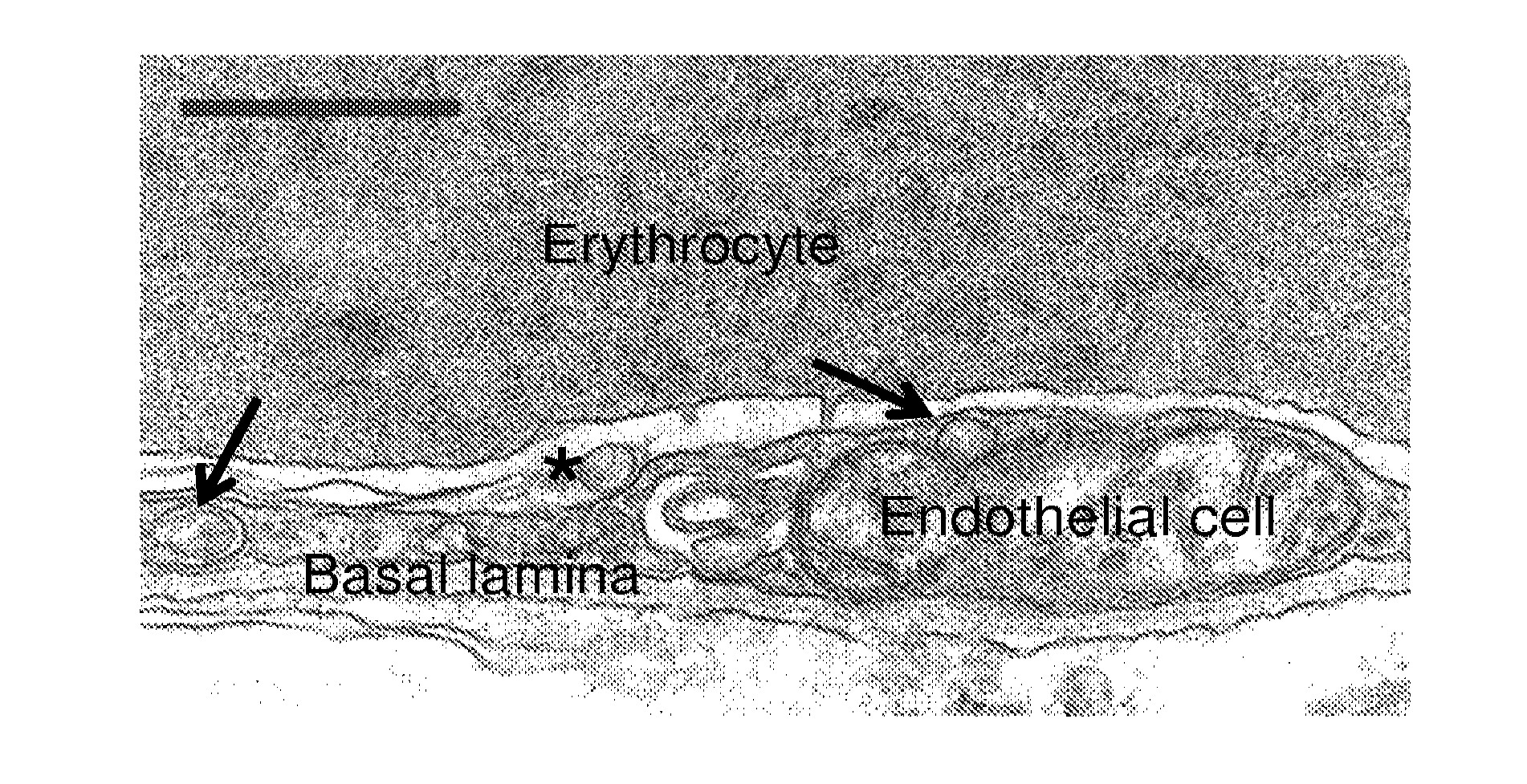Peptides for transport of therapeutics and their carriers in mouse models and humans
a mouse model and human peptide technology, applied in the field of icam1targeting peptides, can solve the problems of inefficient transport to the target site, harmful side effects, and rapid clearance, and achieve the effect of effective and safe transport into and/or across cells
- Summary
- Abstract
- Description
- Claims
- Application Information
AI Technical Summary
Problems solved by technology
Method used
Image
Examples
example 1
Efficacy and Versatility of Targeting to and Transport Mediated by ICAM-1 vs Determinants of Classical Endocytic Pathways
[0100](A) Lung uptake (30 min) of 125I-labeled anti-transferrin receptor (targeted to the clathrin route), anti-GM1 (anti-ganglioside GM1, targeted to caveoli), or anti-ICAM, injected intravenously in mice as free antibodies or absorbed on the surface of 100 nm polystyrene particles (prototype carrier final size=180 nm). Particles had 125I-labeled IgG as a tracer. Dashed line=control unspecific IgG carriers. (B) Lung uptake (30 min) of radiolabeled acid sphingomyelinase, a recombinant enzyme which binds to mannose 6 phosphate (M6P) receptor, vs anti-ICAM polystyrene carriers in control C57Bl / 6 mice vs diseased ASMKO mice. Data is normalized per gram due to larger lung size in ASMKO mice. Dashed line=anti-ICAM carriers injected in control ICAM-1 KO mice, which do not express ICAM-1. (C) Endocytosis (1 h-37° C.) of fluorescent transferrin (targeted to the clathrin r...
example 2
Transport to Different Sub-Cellular Environments via ICAM-1 Targeting
[0101](A) TNFα activated HUVEC were incubated for 1 h at 37° C. with anti-ICAM antibody, then non-bound antibodies were washed and cells were stained with a secondary antibody conjugates to texas red, only accessible to cell surface-located anti-ICAM, to detect the antibody fraction that remained in the plasma membrane. Then, cells were permeabilized and stained with a secondary antibody conjugated with green FITC, which would be accessible to both surface and internalized anti-ICAM. After analysis by fluorescence microscopy, cell surface antibodies were visualized both under the green and red channels, indicated by yellowish fluorescence, whereas no green internalized antibodies were observed. (B) HUVEC were incubated for 1 h at 37° C. with anti-ICAM antibodies absorbed on the surface of 100 nm FITC-labeled polystyrene nanocarriers. Cells were then washed, fixed, and stained with texas red secondary antibody whic...
example 3
Broad Utility of ICAM-1-Mediated Targeting and Transport for a Variety of Drug Delivery Systems and Cell Types
[0102](A) TNFα activated HUVEC were incubated for 1 h at 37° C. with anti-ICAM conjugates prepared by coupling via streptavidin biotinylated anti-ICAM, anti-ICAM polystyrene nanocarriers, anti-ICAM poly-lactic co-glycolic acid (PLGA) nanocarriers, anti-ICAM poly-ethylen glycol (PEG) poly-lactic acid (PLA) nanocarriers, or biopolymeric dendrimers. Non-bound conjugates and carriers were washed, the cells were fixed, stained and analyzed as described in FIG. 2A-B. (B) Internalization of 100 nm FITC-labeled (green) anti-ICAM polystyrene carriers by TNFα-activated macrovascular human umbilical vein endothelial cells (HUVEC), mouse pulmonary microvascular endothelial cells (PMVEC), human brain microvascular endothelial cells (BMVEC), and (C) mouse peritoneal macrophages, human alveolar epithelium-derived EAhy926, and human neuroblastoma SH-SY5Y. In all pictures cell surface-bound...
PUM
| Property | Measurement | Unit |
|---|---|---|
| diameter | aaaaa | aaaaa |
| length | aaaaa | aaaaa |
| length | aaaaa | aaaaa |
Abstract
Description
Claims
Application Information
 Login to View More
Login to View More - R&D
- Intellectual Property
- Life Sciences
- Materials
- Tech Scout
- Unparalleled Data Quality
- Higher Quality Content
- 60% Fewer Hallucinations
Browse by: Latest US Patents, China's latest patents, Technical Efficacy Thesaurus, Application Domain, Technology Topic, Popular Technical Reports.
© 2025 PatSnap. All rights reserved.Legal|Privacy policy|Modern Slavery Act Transparency Statement|Sitemap|About US| Contact US: help@patsnap.com



